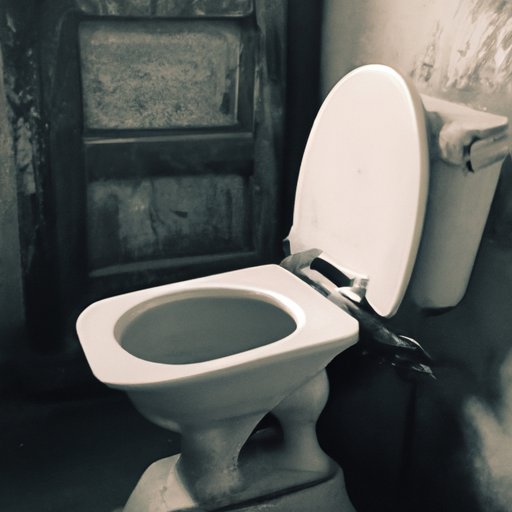Introduction
Toilets are a ubiquitous part of our lives, but few of us stop to consider their complicated history. From ancient civilizations to modern technology, the evolution of the toilet is an interesting story. This article will explore the history of toilet invention, from its earliest beginnings to the present day. We’ll look at famous inventors who have made significant contributions to toilet design, as well as how toilets are used around the world.

History of Toilet Invention: A Timeline
Toilets have been around for thousands of years. Archaeological evidence suggests that early humans used primitive forms of toilets, such as holes dug in the ground. Ancient civilizations, such as those of Mesopotamia and Egypt, had more sophisticated systems, including stone and wooden benches with drains that emptied into rivers or cesspools.
In 1596, Englishman John Harington invented the first flushing toilet. His design used a cistern to store water and was connected to the drainpipe by a valve. The valve was opened by pulling a chain, which released the water and flushed the waste away. Harington’s invention was met with skepticism by his contemporaries, but it laid the groundwork for future designs.
By the 19th century, toilet technology had improved significantly. English plumber Thomas Crapper is credited with making numerous improvements to the flushing toilet, including the U-bend trap, which prevents sewer gases from entering the home. Scottish engineer Alexander Cummings also made important contributions to toilet design, inventing the S-trap in 1775. This device uses a curved pipe to keep water in the bowl, allowing waste to be flushed away without the need for a constant supply of water.
Famous Inventors and Their Contributions to Toilet Design
John Harington is often credited as the inventor of the modern toilet. While his design wasn’t perfect, it laid the groundwork for future designs. Harington wrote about his invention in a 1596 book called “A New Discourse of a Stale Subject, Called the Metamorphosis of Ajax”. He described it as “a great convenience to all estates, especially my Lady’s chamber”.
Thomas Crapper was another important figure in the history of toilet invention. He made numerous improvements to the flushing toilet, including the U-bend trap. Crapper also founded Thomas Crapper & Co., a plumbing business that became one of the most successful in England. Though he didn’t invent the flush toilet, Crapper’s name has become synonymous with it.
Alexander Cummings was a Scottish engineer who invented the S-trap in 1775. This device uses a curved pipe to keep water in the bowl, allowing waste to be flushed away without the need for a constant supply of water. Cummings’ invention was an important step in the evolution of the modern toilet.

Exploring Toilet Culture Around the World
Toilets are used differently around the world. For example, Japan is known for its high-tech toilets, which come equipped with features like heated seats, bidets, and air dryers. India, on the other hand, still relies heavily on non-flush toilets, such as the dry pit latrine. These toilets don’t use any water, which helps to conserve resources in areas where water is scarce.
In Europe, the term “loo” is often used to refer to the toilet. This slang term is believed to have originated in the 1700s, when people would call out “gardez l’eau!” (“watch out for the water!”) when they were emptying their chamber pots out of windows.
Conclusion
The history of toilet invention is long and complex. From ancient civilizations to modern technology, the evolution of the toilet has been shaped by many different inventors and cultures. Famous inventors like John Harington, Thomas Crapper, and Alexander Cummings have made significant contributions to toilet design, while countries like Japan, India, and Europe have each developed unique toilet cultures.
Though the toilet may seem like a simple invention, its history is anything but. It’s an important reminder of the ingenuity of human beings and our ability to adapt and innovate.
(Note: Is this article not meeting your expectations? Do you have knowledge or insights to share? Unlock new opportunities and expand your reach by joining our authors team. Click Registration to join us and share your expertise with our readers.)
